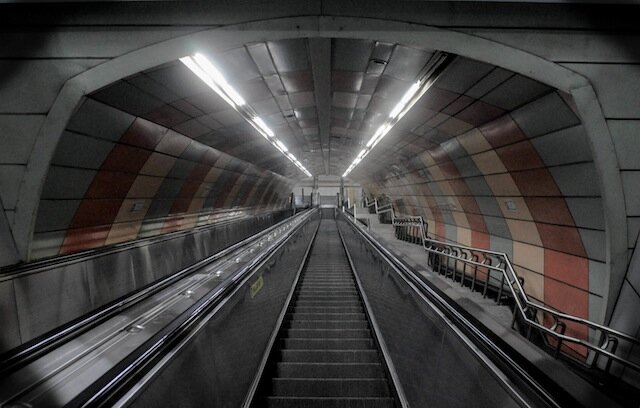
Anyone who has ever played Super Mario Brothers knows that taking any one of the many secret ‘pipelines’ is usually a double-edged sword. On the one hand, you find yourself in a brand new subterranean eco-system, filled with potential riches and the promise of advancing a great distance toward your ultimate goal of completing the level. Yet on the other hand, you and your unlikely avatar, face new and unforeseen dangers amid an ever-shifting labyrinth of platforms and elevators. In fact, you risk getting lost in this world completely. Now, perhaps the ‘subway as pipeline’ analogy has been played out (note that the British word, ‘tube’ literally means ‘subway system’), but when I ride the subway in Seoul, I can’t help but think of how similar my experience – as well as my prospects – are to Mario’s when he/ I slide down a pipeline

It’s evident that Seoul’s subway system offers a seemingly infinite number of shopping possibilities (gold coins!) and a whole host of odd people who don’t seem to show their faces in the light of day (ghouls!), but what really draws me into this analogy is the disorientation we experience as we travel through this infrastructural maze. I think the experience is pretty much the same for everyone: we take an escalator down into the station, swipe our cards, find our train, ride our train, exit from the train, traverse through various tunnels, take an escalator to get to the transfer platform, find our next train, ride the train, exit from the train and then take another set of escalators up to the surface.


What I find so interesting is that somewhere along the way (and for me this is almost immediately) we loose track of our geographical location above ground. When I enter the subway I depart from physical reality – where stops and neighbourhoods are positioned in actual space, relative to one another by measurements of distance and the cardinal directions – and enter into the reality of the subway map, where all that matters to my success is that I move along the indicated path traveling between the dot that marks my departure and the dot that marks my arrival. It doesn’t matter whether I go up, down, east, west, north or south to get from my departure dot to my arrival dot, as long as I magically pop out at the end somewhere that I recognize. In fact, it’s amazing to see this phenomenon reflected in the layout of maps onboard the subway trains themselves. Subway Line 3 which geographically snakes around the city is simplified into a simple U-shape on the map as if to reject its connection to real locations above ground. In much the same way that Mario descends into disjoint territories and subsequently reappears on familiar ground, I enter the subway, kiss away my sense of direction and hope for the best.



But what I love most about the Seoul subway system is its epic ‘pipelines’ which carry us between these two realities and help us transition from underground orientation to above ground orientation and vice versa; the escalators. Its a beautiful feeling when after a long trip you are finally hoisted up to eye level with the outside world, its horizons and all that is contained within them. It is to these great movers and their power of (dis)orientation that I devote this photoessay. I hope you enjoy it!

Photographs taken at Daerim, Namtaeryeong, Noksapyeong and Yeoinaru subway stations
Thanks to Seoul Sub→urban and the rest of the Chincha gang for their help finding the biggest and meanest escalators around town.
By Mike Stulberg











